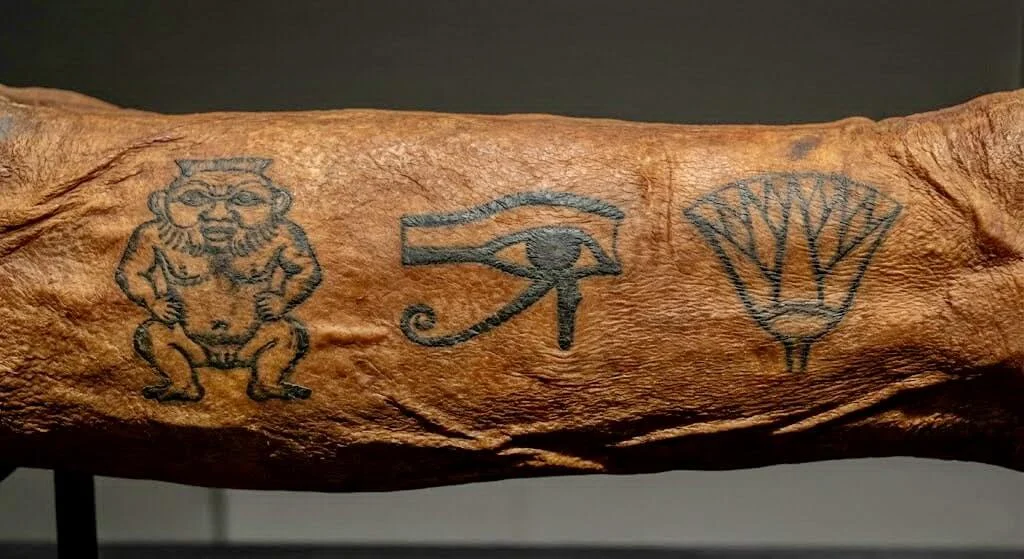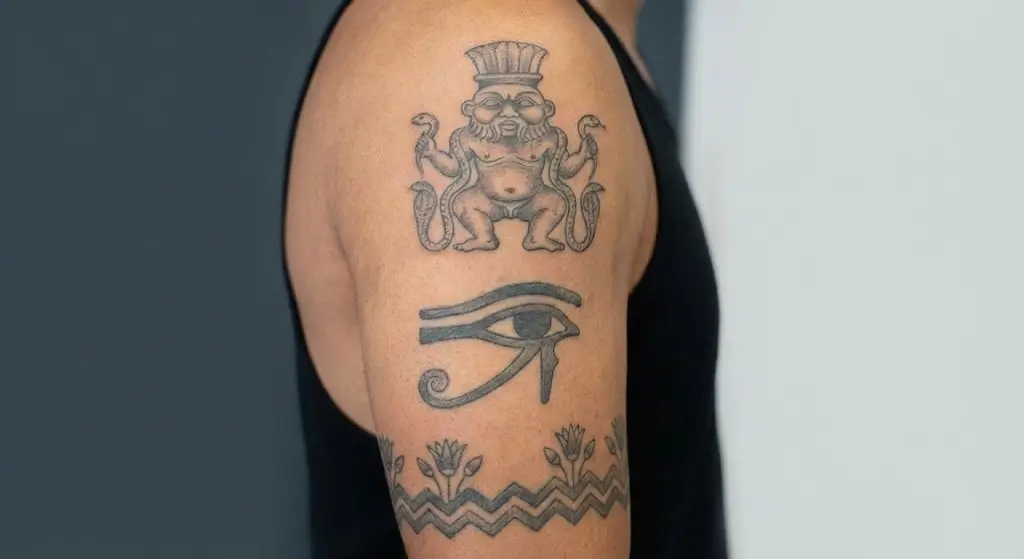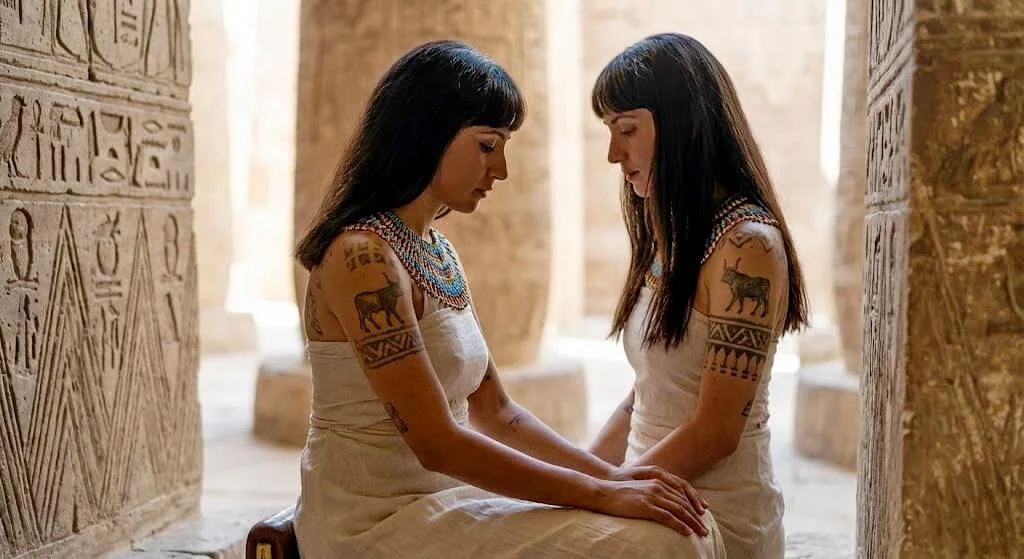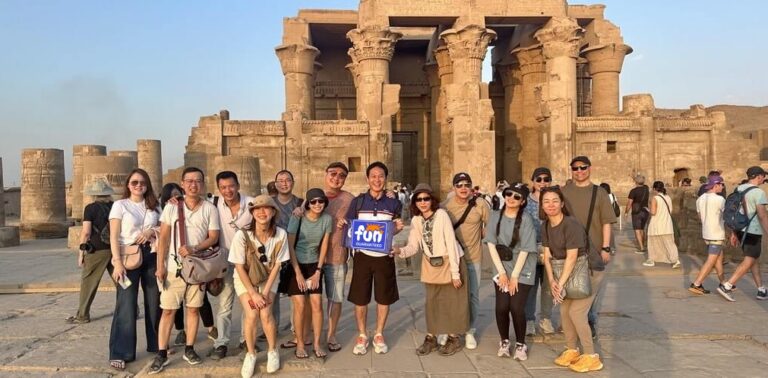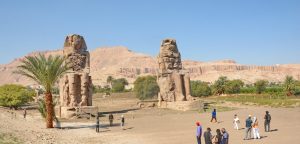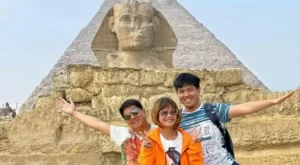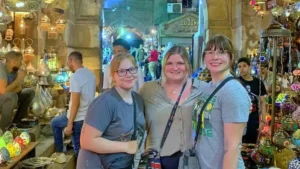More Than Just Skin Deep
Why did they do it? In a culture obsessed with the afterlife, the body was a vessel. Therefore, marking the skin was a way to transform that vessel.
The evidence suggests that tattooing in Ancient Egypt was a form of sympathetic magic.
- Protection: It turned the body into a living amulet against evil spirits.
- Health: It provided medical relief for pain (similar to acupuncture).
- Devotion: It connected the wearer permanently to gods like Hathor and Bes.
Furthermore, the process was painful. Bronze needles were used to punch soot into the skin. The willingness to endure this pain proves the importance of the ritual. It was not a rebellion; it was a requirement for spiritual safety. In this guide, we will move beyond the myths. We will examine the Gebelein Mummies, the famous Deir el-Medina discoveries, and the specific symbols that turned ancient bodies into sacred art.
The Evidence – Who Had Them?

For a long time, historians relied on statues and paintings to understand body art. However, art can be idealized. It does not always reflect reality. To find the truth, we must look at the mummies themselves. The physical evidence for Ancient Egyptian tattoos is rare but undeniable. Because human skin decomposes over time, finding preserved ink requires perfect conditions. Despite these challenges, archaeologists have identified three major discoveries that changed everything.
1. The Gebelein Mummies (Predynastic Period)
The story begins long before the first Pharaoh took the throne. In the British Museum, there are two natural mummies known as the “Gebelein Man” and “Gebelein Woman.” They date back to approximately 3350 BC. For over a century, they were on display, and nobody noticed their ink.
Then, in 2018, infrared scans revealed a secret.
- The Male: On his upper arm, there are tattoos of a wild bull and a Barbary sheep. These animals represent strength and male virility.
- The Female: She bears a series of “S” shaped motifs and baton-like lines on her shoulder. These are likely used in ritual dances.
Why does this matter? This discovery proves that Ancient Egyptian tattoos were not limited to one gender. In the dawn of Egyptian history, all genders modified their bodies. The male’s ink suggests a connection to hunting or power, while the female’s ink suggests a ritualistic role.
2. Amunet and the Middle Kingdom
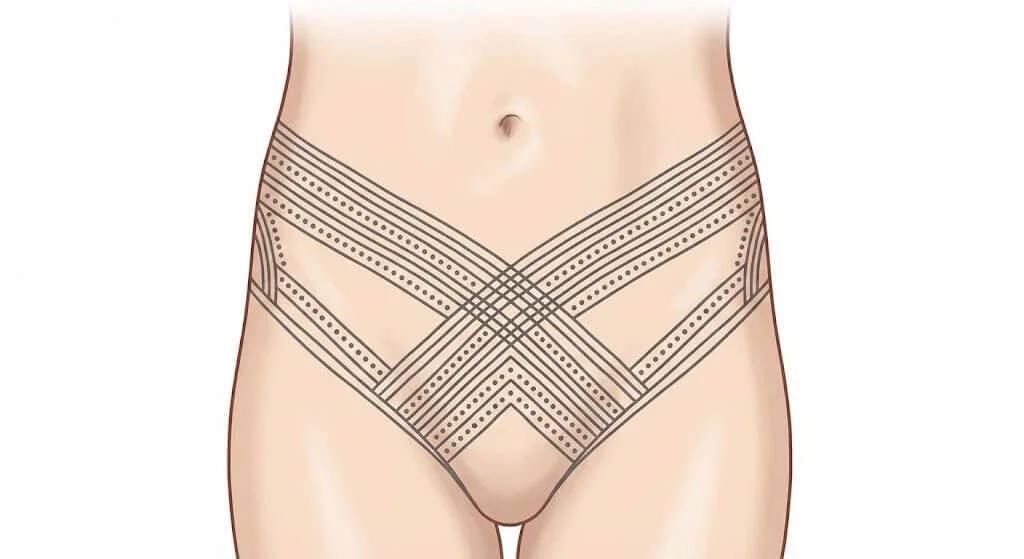
Fast forward to the Middle Kingdom (approx. 2000 BC). The practice seemed to shift. During this era, the evidence for Ancient Egyptian tattoos becomes almost exclusively female.
The most famous example is Amunet. Discovered in 1891 at Deir el-Bahri, Amunet was a priestess of the goddess Hathor. Her mummy revealed extensive geometrical patterns.
- The Design: Parallel lines and dots were tattooed across her abdomen and thighs.
- The Placement: The tattoos were located specifically on the pelvic region.
The Misunderstanding At the time of discovery, male archaeologists dismissed Amunet. They assumed these marks were “sexual” in nature, labeling her a concubine.
However, this was a mistake.
Modern analysis suggests these Ancient Egyptian tattoos were medicinal. The placement on the lower abdomen suggests they were intended to protect the womb during pregnancy. The ink acted as a permanent barrier of protection for the unborn child.
3. The Deir el-Medina Discoveries (New Kingdom)
The most significant breakthrough occurred recently, between 2014 and 2018. At the site of Deir el-Medina (the village of the workers who built the Valley of the Kings), archaeologists found seven tattooed female mummies. Unlike the simple lines on Amunet, these women wore complex images. These discoveries revolutionized our understanding of Ancient Egyptian tattoos.
- The Neck: One mummy had a “Wadjet” (Eye of Horus) tattooed on her neck.
- The Hips: Another had lotus blossoms and cows (symbols of Hathor) on her hips.
- The Arms: Dozens of baboons, snakes, and hieroglyphs covered their skin.
These were not simple markings. They were elaborate works of art. Furthermore, the women were highly respected healers and seeresses. This confirms that in the New Kingdom, having extensive tattoos was a sign of high religious status, not social stigma.



